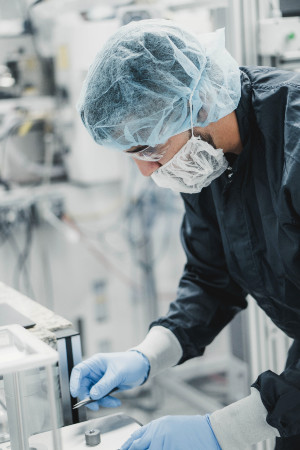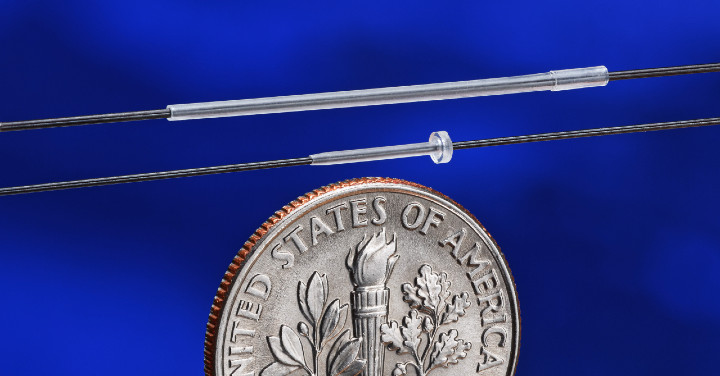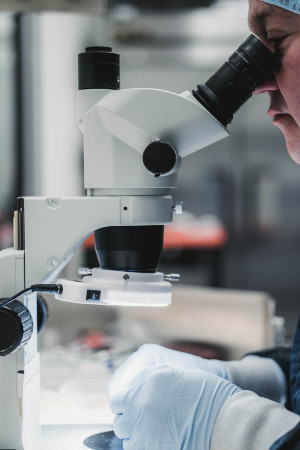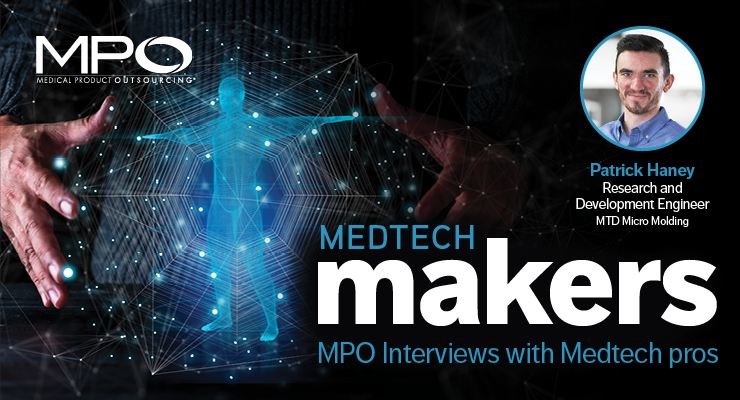When spec’ing molded parts, design engineers can give very exact requirements with regard to tolerances, sizes, and quantity. They may not, however, be aware of the available materials that could offer benefits to the component such as strength, wear resistance, and biocompatibility. These critical factors should be significant to the medical device manufacturer to ensure the component is fabricated to the most ideal specifications possible. Unfortunately, most medical device manufacturers aren’t aware of the latest material advancements and simply rely on previous projects and material preferences.
When it comes to micromolded components, the challenge is even greater. For these parts, the material used will ideally not only offer the aforementioned benefits, but will do so at a size that is significantly smaller than the average molded part. For this reason, material science expertise becomes a critical offering to seek from a micromolding service provider. It’s not enough for the supplier to be familiar with materials that can be used for micromolding medical device components; rather, the engineers at the organization need to understand how certain materials react to certain stresses that are put on it during the fabrication process.
With this in mind, Patrick Haney, research and development engineer at MTD Micro Molding, offered a number of insights on the challenges of micromolding for medical devices. He also provided his expertise on the importance of material science for this fabrication process and the considerations tied to it medical device manufacturers should be aware of.

Patrick Haney in the metrology lab at MTD Micro Molding.
Sean Fenske: What factors are driving growth in micromolding for medtech applications?
Patrick Haney: From my perspective, the factors that drive all growth in this field is an ever-growing understanding of how the viscoelastic and thermal behaviors of specialty polymers change when exposed to the micro-environment. A stronger understanding of the science that drives polymer behavior can allow us to become more inventive and daring in areas spanning from mold and part design, to optimizing processing techniques to manipulate material characteristics, and even find new ways to utilize materials in ways never done before.

An operator performs a thermal analysis on a polymer at MTD Micro Molding.
Haney: It is important the medical device manufacturers understand there can be a lot of unforeseen “road bumps” along the path of micro product development. Often, a project might have to undergo several contingency plans before it finds long term success. Although delays are something not desired by any party involved, sometimes they are inevitable when you are pushing the limits on what is considered to be possible.
MTD has a large database of experience with the unexpected in this industry and encountering the unpredictable is something we view as exciting.
Fenske: Is there a lack of understanding among medical device manufacturers regarding the types of materials that can be used for micromolding? How do you help clarify this?
Haney: I wouldn’t say there are specific types of materials that are not “micro-moldable.” Rather, the behavioral changes from micromolding one material as compared to another is greatly exaggerated. For example, some materials are very responsive to shear thinning, while others are not. Or the ratio of longitudinal vs. transverse shrinkage may vary greatly when exposed to ultra-high shear rates.
The predictable viscoelastic and thermodynamic behaviors of polymer materials are often exaggerated to an extreme, if not entirely different all together. It is this principle that ultimately determines how realistic a desired material may be for a given application.

Examples of thin-wall, high aspect ratio micromolding by MTD Micro Molding.
Fenske: What advances are being made in material science to enable a broader selection of material options for micromolding?
Haney: Polymer materials are getting better and more efficient every day. New ideas are constantly evolving to make materials more adept at interfacing with smart technology and optical devices, while also meeting demands of increasingly challenging mechanical functions with little mass in which to distribute loads.
From my perspective, the more characterization data compiled for a given material, the higher the chances of success become. This is because in a micro molding environment, all thermodynamic and viscoelastic characteristics are exaggerated. So if a micromolder understands things like the pressure/volume/temperature relationships of a material, a material’s susceptibility to shear thinning, or its crystallization dynamics, it becomes easier to troubleshoot the mysterious phenomena that so often appear in the field.
Fenske: Can you offer some examples of these mysterious phenomena you see when micromolding for medical devices?

An operator inspects micro medical parts under a microscope at MTD Micro Molding.
It is not uncommon for the heat transfer rate to be especially high for parts in a micro molding cycle. For crystalline polymers, crystal formation is a thermo-dynamic phase change. This means for polymer crystals to form, energy in the form of heat must be present in the system. When the cooling rates of such tiny parts become ultra-high, it can become challenging to ensure the molded product does not contain prematurely formed crystals that will not demonstrate the expected mechanical behavior predicted from a material data sheet.
Additionally, micro parts are often exposed to extremely high shear rates during the molding process. Since this exposure occurs over such a short duration, degradation due to shear heating does not make micromolding an impossibility. However, it does often times dramatically change the filling behavior of the melt. In some cases, the typical non-Newtonian fountain flow is overtaken by a phenomena described as the “second Newtonian plateau” in which the shear thinning of a material reaches a limit. Not only does this deviate the filling pattern from what would typically be expected, but it also often forms different crystalline structures altogether that are often referred to as “Flow Induced Crystallization.”
Fenske: What challenges still exist with regard to the types of materials that can be micromolded or how small a component can be made with the available materials?
Haney: One of the greatest challenges unique to micromolding is the lack of time available to create good parts. Micro parts lack the mass required to retain heat energy for a long period of time when surrounded by so much relative tool steel. When the heat transfer rate of the part is so high, it can become very difficult to maintain the viscosity characteristics required to fill thin-walled features. Additionally, such heat transfer rates can translate to other problems the molder must be aware of, including factors like crystallinity formation or exposure to excessive shear rates.
Fenske: What advantages can be realized by medical device manufacturers in aligning a project with the best material? Does MTD help make these connections?
Haney: Determining the best material for a project may arguably be the most important decision within a product development timeline. The importance of such a decision spans anywhere from device performance to cost to manufacturability. Furthermore, if there are multiple comparable material types, it is not uncommon for one material type to respond better to the micro molding environment when compared to another.
This is something MTD prides itself on being experts on. Not only are we willing to help make decisions for material selection, but we prefer to get involved in the process as early as possible.
Learn more about MTD Micro Molding >>>>>














